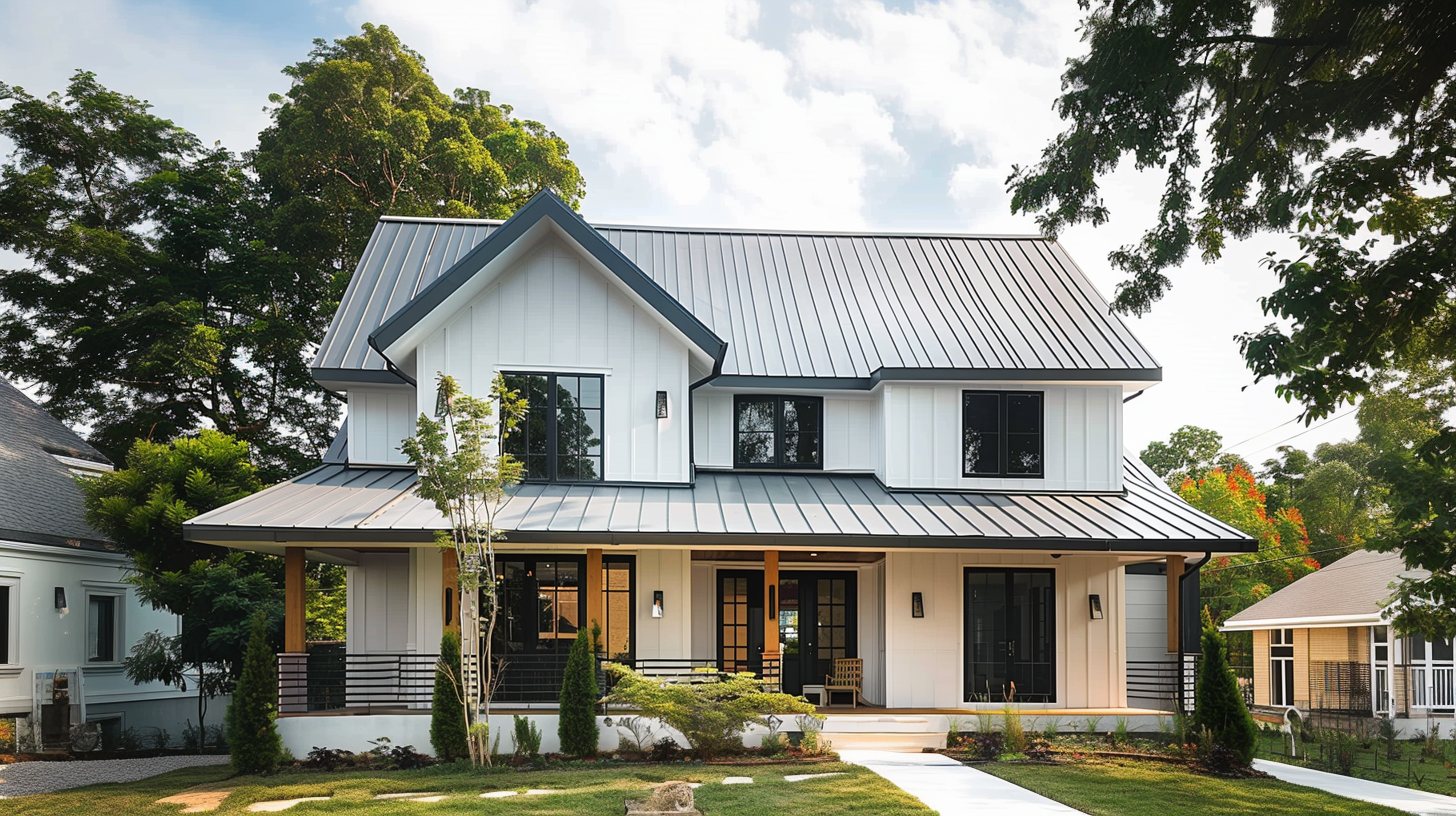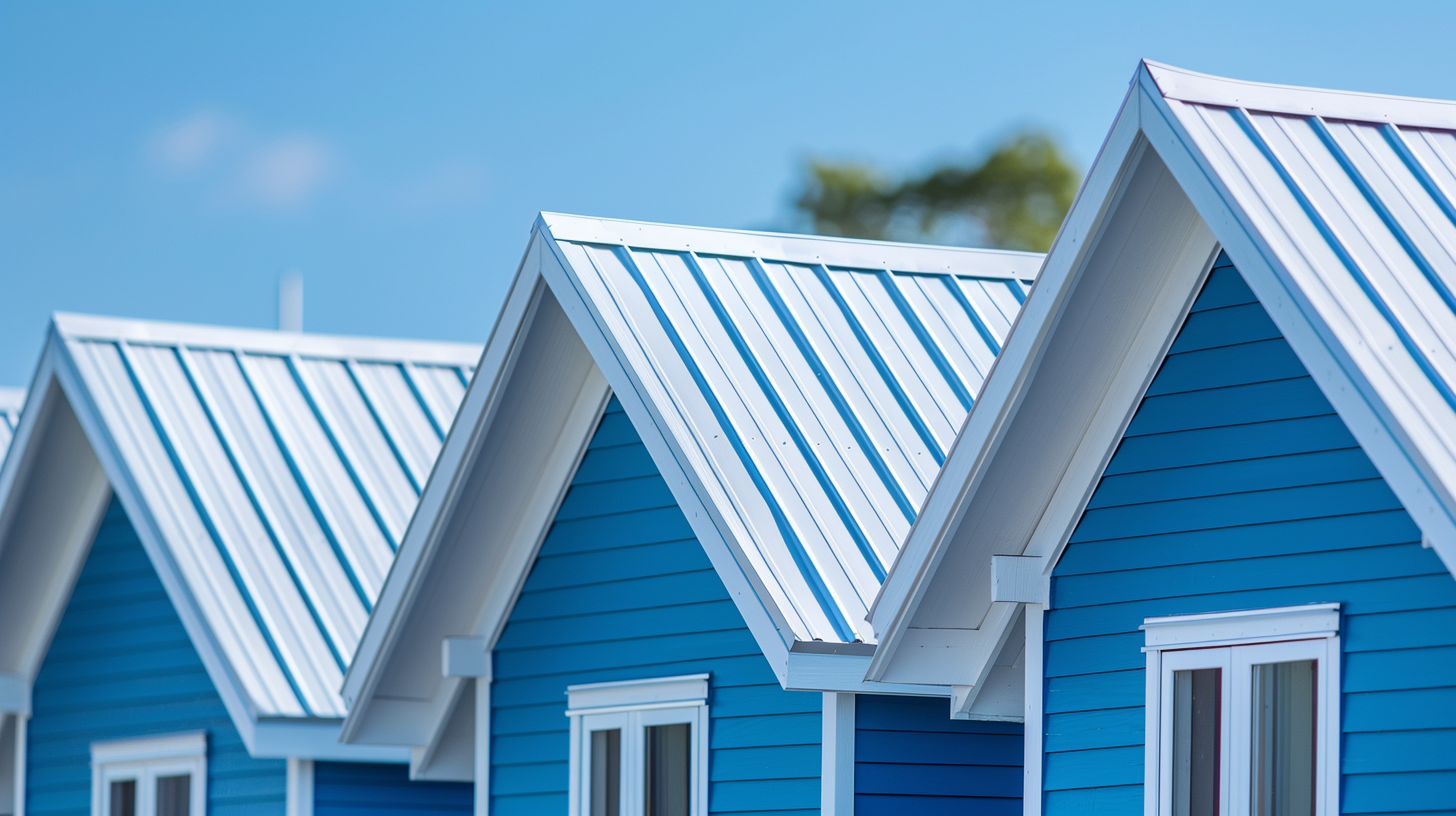Understanding Different Roof Sizes and Their Implications
Roof sizes are crucial for homeowners and builders, influencing a property’s aesthetic and functional aspects. The length of a roof impacts everything from energy efficiency to water drainage and overall stability. Additionally, selecting the right roof size can enhance curb appeal and increase property value. Different roof sizes cater to various architectural styles and weather conditions, making it essential to understand the implications of these choices. Whether planning new construction or a roof renovation, an informed approach to roof sizing ensures your home remains beautiful and well-protected against the elements.

Roof Sizes - How Roof Size Affects Installation - Sky Roofing Construction & Remodeling
How Roof Size Influences Structural Integrity and Support Needs
Roof size significantly impacts structural integrity in the roofing industry, influencing factors such as weight distribution, load-bearing capacity, and potential structural stress. An enormous roof distributes weight over a broader area, which can enhance stability but may also necessitate more robust support systems to handle increased loads. When considering load-bearing capacity, it’s essential to account for the roof’s weight and additional loads from snow, rain, and wind.
As roof size increases, additional support structures, such as beams or trusses, become critical to maintain stability. Insufficient support can lead to premature deterioration and compromise safety. Moreover, larger roofs may require specialized design considerations, including metal roofing options, to adhere to building codes and safety standards, ensuring they can withstand environmental pressures without risking structural failure. An accurate estimate for these considerations helps plan and budget for the necessary support and design features.
The Relationship Between Roof Size and Insulation Requirements
The size of a roof significantly impacts insulation requirements, playing a crucial role in energy efficiency and temperature regulation. Larger roofs typically experience higher heat gain during warmer months and increased heat loss during colder months. This means selecting the appropriate insulation becomes essential to combat these effects effectively.
In climates with extreme temperatures, an enormous roof may require more extensive insulation to maintain comfortable indoor conditions. Insulation is a barrier, reducing heat transfer between the interior and exterior spaces. Without sufficient insulation, homes with larger roofs might face higher energy costs as heating and cooling systems work harder to regulate temperatures.
Additionally, the roof size influences how quickly a home can achieve optimal energy efficiency. By enhancing insulation in larger roofs, homeowners can minimize heat gain and loss, lowering energy bills and reducing environmental footprint. Understanding the relationship between roof size and insulation requirements is vital for homeowners looking to optimize comfort and energy efficiency throughout the changing seasons.
How Roof Size Affects Installation and Maintenance Costs
When considering roof sizes for your roof replacement project, it’s essential to understand how these dimensions can influence both installation and maintenance costs. The overall length of the roof plays a significant factor in determining the complexity of the installation process, the type of roofing material required, and even the long-term upkeep needs. For example, rectangular and hipped roofs may present different challenges during installation, potentially affecting labor costs. Larger roofs require more durable, common roofing materials to withstand significant stress and environmental factors, while smaller roofs are more straightforward and cost-effective.
Additionally, the materials chosen often vary based on the roof size; larger roofs might need materials that can handle increased stress, while smaller roofs might use more standard options. Roof size can also impact ongoing maintenance, as larger roofs may have more areas susceptible to wear and damage, leading to increased maintenance costs over time. Understanding these factors can help homeowners and builders make decisions that balance budget, longevity, and aesthetic appeal.
Cost Implications of Larger Roof Sizes on Installation
When considering roof sizes, homeowners must be aware of the cost implications of larger roofs. One significant factor is the increased material requirements; larger roof sizes necessitate more shingles, underlayment, and other materials, driving up overall expenses. Additionally, installation of larger roofs tends to be more labor-intensive, which can further elevate costs. More workers may be needed, and the project’s duration typically extends, leading to higher labor charges.
Moreover, larger roofs require structural reinforcement to support the additional weight and size, introducing further expenses. Homeowners should also consider the potential impact on energy efficiency; larger roofs can affect insulation and ventilation, increasing heating and cooling costs if not properly designed.
These financial factors play a pivotal role in homeowner decisions regarding roofing projects. Understanding the implications of larger roof sizes helps in budgeting and influences choices about design, materials, and long-term energy savings, ultimately ensuring a well-informed investment in home improvement.

Roof Sizes - Common Roof Sizes - Sky Roofing Construction & Remodeling
Common Roof Sizes for Residential vs. Commercial Properties
When it comes to roofing, understanding the differences in standard roof sizes for residential versus commercial properties is crucial for effective planning and execution of roofing projects. Accurate measurements of roof size are essential as they directly affect roof installation and maintenance. Roof sizes and roof pitches can significantly impact not only the aesthetics and functionality of a structure but also its overall cost, energy efficiency, and maintenance needs. Residential roofs tend to be smaller and designed for a singular family dwelling, whereas commercial roofs are generally larger, accommodating expansive spaces for businesses and operations. The roof size and slope can also influence the choice of roofing materials, including asphalt shingles or metal roofing. Roofing contractors must consider these factors to ensure the roof surface is installed correctly and effectively maintained.
Typical Roof Sizes for Single-Family Homes
When considering roof sizes for single-family homes, it’s essential to recognize that variations occur based on architectural styles, regional influences, and building regulations. Generally, the size of a roof can reflect the overall size of the home it covers, with the average area ranging from 1,500 to 2,500 square feet.
Common roof types include gable roofs, hip roofs, and flat roofs. Gable roofs, characterized by their triangular shape, typically range from 1,000 to 1,800 square feet, providing excellent drainage and ventilation. Hip roofs, with slopes on all sides, can be slightly larger, averaging between 1,200 and 2,000 square feet, promoting structural stability. Flat roofs, often found in modern architectural styles, may vary significantly but generally span 1,000 to 1,500 square feet, efficiently using space and allowing for rooftop terraces.
Calculating square footage is crucial, as it influences material needs and impacts heating and cooling efficiency, aesthetics, and resale value. Understanding roof size in home design can enhance functionality and appeal.
Standard Roof Dimensions for Commercial Buildings
When considering standard roof dimensions for commercial buildings, it’s essential to understand the impact of pitch, materials, and structural requirements. Roof types vary significantly, with flat roofs typically measuring 10 to 25 degrees pitch, while sloped roofs often range from 30 to 45 degrees. Gabled roofs can feature dimensions that cater to aesthetics and functionality, generally offering a height of 12 to 20 feet.
Flat roofs, commonly found in commercial settings, allow for easy installation of HVAC systems and maximize usable space. Conversely, sloped roofs improve drainage and enhance energy efficiency by minimizing heat absorption. Materials like TPO or EPDM for flat roofs and asphalt shingles for sloped options also influence overall performance and maintenance needs.
Proper roof dimensions and pitches significantly affect energy efficiency. Well-designed roofs can mitigate heat gain and loss, lowering energy costs. Understanding these factors is essential for ensuring longevity and reducing upkeep costs associated with commercial roofs.

Roof Sizes - The Impact of Roof Size - Sky Roofing Construction & Remodeling
The Impact of Roof Size on Energy Efficiency
When considering roof sizes, it’s essential to recognize their significant impact on energy efficiency. A roof’s dimensions, slope, and shape are crucial in how a building interacts with sunlight, wind, and temperature fluctuations. Roof complexity, including complex shapes and steep roofs, can influence how effectively a roof manages heat and cold. A well-sized roof with the exact size and appropriate roof features can help regulate indoor temperatures, reduce the need for heating and cooling systems, lower energy bills, and minimize environmental impact. Furthermore, larger roof areas, such as a square foot roof or those with intricate roof structures, may provide opportunities to install energy-efficient features like solar panels and green roofing systems. Understanding the relationship between roof size, roof features, and energy efficiency allows homeowners and builders to make informed decisions that enhance comfort and promote sustainability. This awareness of cost factors and the ability to adapt to severe weather conditions can lead to choices that maximize the benefits of a roof’s design, contributing to a healthier living space while supporting energy conservation efforts.
The Relationship Between Roof Size and Insulation Requirements
The size of a roof significantly influences insulation requirements, directly impacting heat loss and energy efficiency. Larger roofs generally require more insulation to prevent excessive energy loss, particularly in regions with extreme climates. This is because larger surface areas can increase heat exchange between the interior and exterior environments.
The choice of insulation materials is crucial to maintaining optimal energy efficiency. Standard options include fiberglass, spray foam, and cellulose, each with varying R-values measuring thermal resistance. For larger roofs, selecting a material with a higher R-value can enhance insulation effectiveness, thereby reducing heating and cooling demands.
Moreover, climate plays a crucial role in determining insulation thickness and type. In colder climates, thicker insulation is essential to combat heat loss, while in warmer regions, the focus may be on ventilation alongside insulation to manage heat buildup. Understanding the intricate relationship between roof size and insulation requirements is vital for ensuring a well-insulated, energy-efficient building.
Ensure Optimal Performance with the Right Roof Size
Understanding how roof sizes impact structural integrity, energy efficiency, and overall costs is essential for any successful roofing project. Roof sizes play a pivotal role in determining your home’s durability and energy efficiency, and making informed choices about these dimensions can lead to significant long-term benefits. Contact Sky Roofing Construction & Remodeling (https://skyroofingconstructiontx.com) today at (210) 942-9797 for expert advice and quality installation tailored to your needs. Let our team help you achieve the perfect roof size for your property and ensure your home is well-protected and energy-efficient.
Tasha Davis is a knowledgeable contributor to Sky Roofing Construction & Remodeling, with a specialty in roofing project management and customer service excellence. Tasha’s experience in overseeing large-scale roofing projects ensures that her writing is both practical and customer-focused, providing homeowners with tips on navigating the roofing process smoothly and ensuring their satisfaction from start to finish.

